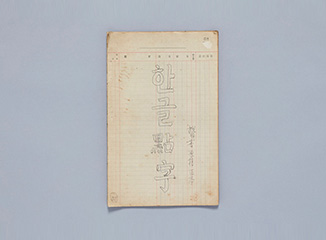November 4th was Braille Day! So let's raise some awareness!
If you live in Korea you can see everyday braille signs. Korean government wants to make the life of visually impaired people easier by introducing braille in the subways, street crossings, toilets, banks, elevators, stairs, doors, and so on. They also have a sound system for announcing the stations in subways and busses and of course, the doors have one as well. Also, crossings do announce when to cross and where not to. As well as streets and parts where you can walk, that present yellow dots on the ground. They serve as guidelines. I think we should learn and do more for each other and of course, try to be better each day.
Do you know that Seoul Global Center has a special volunteering class where you can make “braille word cards for visually impaired children"? Before the class they will educate people to improve their awareness of disability and after they make together cute braille cards that can be used by visually impaired children!
I participated in this class and I learned so much! I think is very important to raise awareness about visually impaired people and help them as much as possible.
The braille alphabet for the Korean language is known as Korean Braille. It has no visual similarities to other braille scripts that may be found worldwide. Instead, it distinguishes between initial consonants, vowels, and final consonants and follows the patterns observed in hangul. Which makes it totally unique.
On November 3, the Ministry of Interior and Safety's National Archives of Korea announced that handwritten manuscripts for Hangeul Jeomja (Braille) and their associated documents had been restored in honor of National Braille Day (Nov. 4). Hangeul Jeomja, which is recognized as a National Registered Cultural Heritage, demonstrates how to use the Hunmaengjeongeum, a home braille system developed by the educator Park Du-Seong (1888–1963), also known by his pen name Songam. Hangeul Jeomja, an indigenous writing system based on the principles of Hangeul, was approved on November 4, 1926, as the nation's first six-dot braille system. The Japanese occupation of the Korean Peninsula, allowed the visually impaired to learn to read.


















Commenti